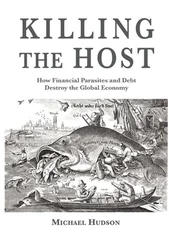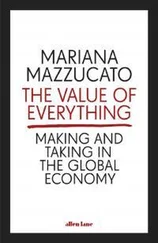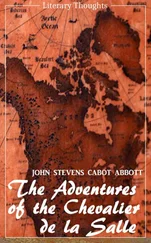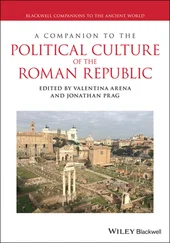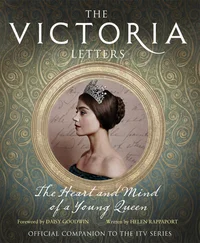A Companion to the Global Renaissance
Здесь есть возможность читать онлайн «A Companion to the Global Renaissance» — ознакомительный отрывок электронной книги совершенно бесплатно, а после прочтения отрывка купить полную версию. В некоторых случаях можно слушать аудио, скачать через торрент в формате fb2 и присутствует краткое содержание. Жанр: unrecognised, на английском языке. Описание произведения, (предисловие) а так же отзывы посетителей доступны на портале библиотеки ЛибКат.
- Название:A Companion to the Global Renaissance
- Автор:
- Жанр:
- Год:неизвестен
- ISBN:нет данных
- Рейтинг книги:5 / 5. Голосов: 1
-
Избранное:Добавить в избранное
- Отзывы:
-
Ваша оценка:
- 100
- 1
- 2
- 3
- 4
- 5
A Companion to the Global Renaissance: краткое содержание, описание и аннотация
Предлагаем к чтению аннотацию, описание, краткое содержание или предисловие (зависит от того, что написал сам автор книги «A Companion to the Global Renaissance»). Если вы не нашли необходимую информацию о книге — напишите в комментариях, мы постараемся отыскать её.
An innovative collection of original essays providing an expansive picture of globalization across the early modern world, now in its second edition A Companion to the Global Renaissance: Literature and Culture in the Era of Expansion, 1500–1700, Second Edition
Companion’s
A Companion to the Global Renaissance
cum
A Companion to the Global Renaissance: Literature and Culture in the Era of Expansion, 1500–1700, Second Edition
A Companion to the Global Renaissance — читать онлайн ознакомительный отрывок
Ниже представлен текст книги, разбитый по страницам. Система сохранения места последней прочитанной страницы, позволяет с удобством читать онлайн бесплатно книгу «A Companion to the Global Renaissance», без необходимости каждый раз заново искать на чём Вы остановились. Поставьте закладку, и сможете в любой момент перейти на страницу, на которой закончили чтение.
Интервал:
Закладка:
Cross-cultural exchanges are marked by epistemological inclusivity as well as violence, understandings and misunderstandings across cultures, making visible the varied contingencies of human experience – of a constant reaching out to “worlds elsewhere,” both outwardly and inwardly. In her eloquent Afterword to this second edition, “Lyric Poetics for the Global Renaissance,” Ayesha Ramachandran calls for a “more substantive consideration of lyric poetry within the critical and methodological paradigm of the ‘Global Renaissance’ … to expand and deepen studies of both the lyric and the early modern experience of globality.” She calls for a mode of “lyric thinking,” to lead us to think afresh about the materiality of global drives, as she argues that “the unique conjunction of particular and universalizing modes of thinking in the lyric enable it to articulate a phenomenology of worldly experience. In this, the lyric performs the labor of inward abstraction, facilitating forms of thinking that explore what it means for individuals to inhabit a shifting, expanding world.” While some chapters in this second edition deal with epic poetry and poetic drama, and only Chapter 25discusses lyric poems, the Afterword provides us with a retrospective nudge to reflect on the accounts of figures who appear in this volume via “a phenomenology of worldly experience ... [so] we might discern an alternate means of exploring and expressing the global.”
Within this context of my reflections on the experiential, and while gesturing toward “lyric thinking,” my aim in this volume is not to obfuscate the history of colonial ventures. Among the topics covered are forced expropriations of land, capitalist profit and exploitation of foreign labor by trading companies, and different forms of Western xenophobia, one effect of which was justifying English and European slaving practices. Overall, what is often evident is the convergence of racist ideologies with commercial imperatives underpinning Western globalization. In addition, what we can also observe is how economic networks reconfigured European systems of signification in producing racial and racist, often sexualized, typologies whereby non-European “others” were subordinated. In sum, my aim in this book (as well as the first edition) is not to paint a rosy picture of the Renaissance while emphasizing the trajectories of transnationalism and cosmopolitanism, as is the critique in recent scholarship (Loomba 2019, 1–3, 25). Rather, I think these chapters point to telling links between cross-cultural encounters and exchanges and emerging policies and ideas of the Western powers whose colonizing grasp was reaching out toward economic, religious, and cultural dominance. Furthermore, while recognizing the early modern period as an era of European expansion and emerging colonial ambitions, this edition eschews a singular ideological agenda that views colonialism as a hurtling juggernaut conquering the whole world. Rather, it calls for open spaces for a phenomenology of worldly experience while acknowledging the power of ruling elites and monarchs who guided the imperial destinies of their nations.
Perhaps most relevant to our own times, an important contribution of this edition of A Companion to the Global Renaissance is to show how globalizing perspectives on early modernity offer new venues for historically engaging with the legacies and genealogies of Western colonialism, racism, xenophobia, sexual orthodoxies, and anti-Islamic and anti-Semitic biases, among others. Thus, for instance a global early modernity can provide a useful lens for producing contemporary pedagogies of race, via comparative and contrapuntal frameworks, reading early modern texts at the intersections of postcolonial theory and critical race studies as well as from various historical contexts. In the past few years, numerous magnificent scholarly responses have addressed these pressing issues of difference, hierarchy, and especially of racism, as they engage with the historical and rhetorical coordinates of the global early modern (Erickson and Hall 2016; Heng 2018; Loomba 2007). The chapters of this edition, in varying forms and degrees, also address the genealogies and histories of present-day social, political, and racial struggles, but their range and variety ensures that cumulatively they do not totalize the past and present even while observing echoes and resemblances between the two historical periods.
Finally, I cannot help being reminded that we are living in the shadow of a worldwide pandemic and its attendant social upheavals and economic hardships. We are being forced to think of globality and globalism revealing connections across borders, yet the virus also knows no borders, as death spreads in waves. Our global awareness of our predicament brings to life for us the premodern and early modern plagues that are documented in so many visual and textual materials to which we have access. Our current crisis helps us to understand the Shakespearean world, with theaters being shut down, as people fled cities and towns and bodies piled up in the streets during the periodic outbreaks of the plague. Hunkered down in our current pandemic, we wonder what kind of “brave new world” awaits us all.
REFERENCES AND FURTHER READING
1 Brotton, Jerry. The Renaissance Bazaar: From the Silk Road to Michelangelo. Oxford: Oxford University Press, 2002.
2 Burckhardt, Jacob. The Civilization of the Renaissance in Italy, Vol. 2. Trans. S. C. G. Middlemore. Introduction, Benjamin Nelson and Charles Trinkaus. New York: Harper, 1958.
3 Dimmock, Matthew. New Turkes: Dramatizing Islam and the Ottomans in Early Modern England. Aldershot, Hampshire: Ashgate Press, 2005.
4 Erickson, Peter and Kin F. Hall. “‘A New Scholarly Song’: Rereading Early Modern Race,” Shakespeare Quarterly 67/1 (2016): 14–29.
5 Gilroy, Paul. The Black Atlantic; Modernity and Double Consciousness. Cambridge, MA: Harvard University Press, 1995.
6 Hakluyt, Richard. The Principal Nauigations, Voyages, Traffiques and Discoueries of the English Nation, 2nd ed. London,1598–1600.
7 Heng, Geraldine. The Invention of Race in the European Middle Ages. Cambridge: Cambridge University Press, 2018.
8 Jardine, Lisa. Worldly Goods: A New History of the Renaissance. New York: W.W. Norton, 1996.
9 Kamps, Ivo and Jyotsna G. Singh, Eds. Travel Knowledge: European “Discoveries” in the Early Modern Period. New York: Palgrave, 2001.
10 Loomba, Ania. “Periodization, Race, and Global Contact,” Journal of Medieval and Early Modern Studies 37/3 (2007): 595–620.
11 Loomba, Ania, Ed. “Introduction,” in A Cultural History of Western Empires in the Renaissance (1450–1650). London: Bloomsbury Academic, 2019, 1–26.
12 Matar, Nabil. Turks, Moors, and Englishmen in the Age of Discovery. New York: Columbia University Press, 1999.
13 Parker, Patricia. “Cassio, Cash, and the Infidel ‘O’: Arithmetic, Double-Entry Book-keeping, and Othello’s Unfaithful Accounts,” in A Companion to the Global Renaissance: English Literature and Culture in the Era of Expansion, 1st ed. Ed. Jyotsna G. Singh. Wiley, Blackwell, 2013, 223–241.
14 Smith, Ian. Race and Rhetoric in Renaissance England: Barbarian Errors. New York: Palgrave Macmillan, 2009.
15 Vitkus, Daniel. Turning Turk: English Theatre and the Multicultural Mediterranean, 1570–1630. New York: Palgrave, 2003.
Introduction The Global Renaissance
Jyotsna G. Singh
I Globes
Queen Elizabeth claims the world in the allegorical Armada portrait shown in Figure 0.1. Her right hand rests on a globe, her fingers “covering the Americas, indicating England’s dominion of the seas and plans for imperialist expansion of the New World.” 1Dated c. 1588, this painting commemorates the defeat of the Armada, part of an “outpouring of the eulogistic material” that marked this event, but the date of the portrait has also been anecdotally linked to the birth of the first English child in the Virginia colony. 2The viewer’s gaze is particularly drawn to the terrestrial globe under her hand – seemingly innocuous in terms of its dimensions – but a familiar object of the period, represented in print and paintings, that functioned as a “socially affective object” signaling a “transitional moment in the history of modernity” (Brotton 1999, 72). History and geography intersect in the allegorical image of the globe, marking recognizable territorial boundaries of the new world, while observing a triumphal moment in Elizabeth’s reign in which England defeats Spain, a Catholic power and its rival, with one instance of its rivalry being the colonization of the Americas. Here, it is apparent that placed in the luxurious setting of this painting, the globe would appeal to the emotions and imagination of the viewers while signaling the development of an emergent geography in sixteenth- and seventeenth-century Europe. Showing the ways in which the terrestrial globe figured in promoting “an affective global awareness,” Brotton explains its history as follows:
Читать дальшеИнтервал:
Закладка:
Похожие книги на «A Companion to the Global Renaissance»
Представляем Вашему вниманию похожие книги на «A Companion to the Global Renaissance» списком для выбора. Мы отобрали схожую по названию и смыслу литературу в надежде предоставить читателям больше вариантов отыскать новые, интересные, ещё непрочитанные произведения.
Обсуждение, отзывы о книге «A Companion to the Global Renaissance» и просто собственные мнения читателей. Оставьте ваши комментарии, напишите, что Вы думаете о произведении, его смысле или главных героях. Укажите что конкретно понравилось, а что нет, и почему Вы так считаете.

